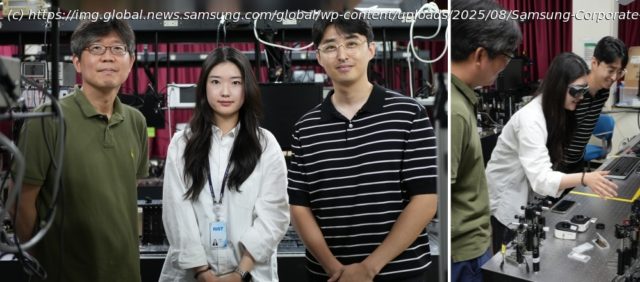A research paper titled “Compact eye camera with two-third wavelength phase-delay metalens” — focused on ultra-compact metalenses for eye cameras and conducted
A research paper titled “Compact eye camera with two-third wavelength phase-delay metalens” — focused on ultra-compact metalenses for eye cameras and conducted through a joint industry-academia project between Samsung Electronics and Pohang University of Science and Technology has been published in the internationally renowned academic journal Nature Communications.
The study was jointly led by Dr. Jeong-Geun Yun, from Samsung Research, and Junsuk Rho, a professor at POSTECH. Hyunjung Kang, a researcher at POSTECH, served as co-first author. Samsung adopted a comprehensive approach — spanning ideation, implementation and validation — to demonstrate the potential of next-generation photonic device technologies and new opportunities for product differentiation.
In particular, the research shows promise for reducing the thickness and weight of extended reality (XR) devices and lowering the height of smartphone camera modules — offering a possible solution to the so-called “camera bump,” where the camera protrudes from the body of the device. Most notably, the team successfully overcame long-standing technical limitations that had hindered the commercialization of metalenses.
World’s First Implementation of Two-Third Wavelength Phase Delay
A metalens is an ultra-thin lens that manipulates light using nanostructures — much thinner than a human hair — arranged on a flat surface, rather than relying on curved surfaces like traditional lenses.






